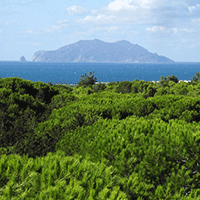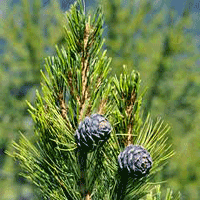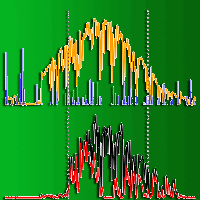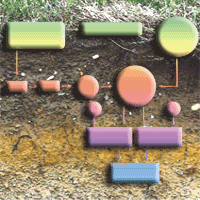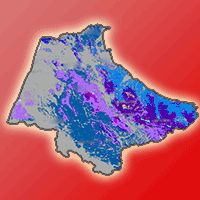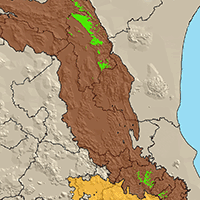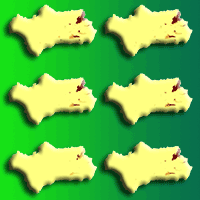
Climate change may threaten the southernmost Pinus nigra subsp. salzmannii (Dunal) Franco populations: an ensemble niche-based approach
Rafael M Navarro-Cerrillo (1) , Joaquín Duque-Lazo (1), Rubén D Manzanedo (2), Raúl Sánchez-Salguero (3), Guillermo Palacios-Rodriguez (1)
iForest - Biogeosciences and Forestry, Volume 11, Issue 3, Pages 396-405 (2018)
doi: https://doi.org/10.3832/ifor2588-011
Published: May 15, 2018 - Copyright © 2018 SISEF
Research Articles
Abstract
We used Species Distribution Modeling to predict the probability of Iberian pine (Pinus nigra subsp. salzmannii [Dunal] Franco) occurrences in southern Spain in response to environmental variables and to forecast the effects of climate change on their predicted geographical distribution. The ensemble modeling approach “biomod2” was used, together with present Iberian pine data, to predict the current potential distribution based on bioclimatic explanatory variables (200 m resolution) and to forecast future suitability by studying three periods (2040, 2070, and 2100), considering the Global Circulation Models BCM2, CNCM3, and ECHAM5, and the regional model EGMAM, for different scenarios (SRAB1, SRA2, SRB1). Model evaluation was performed using Kappa, True Skills Statistic (TSS), and Area Under the Curve (AUC) values. The biomod2 approach highlighted the average number of days with a minimum temperature equal to or below 0°C, annual precipitation, and aridity index as the most important variables to describe the P. nigra occurrence probability. Model performances were generally satisfactory and the highest AUC values and high stability of the results were given by GAM and GLM, but MaxEnt and the SRE model were scarcely accurate according to all our statistics. The ensemble Species Distribution Modeling of P. nigra in Andalusia predicted the highest probability of species occurrence in the eastern areas, Sierra de Cazorla being the area with the highest occurrence of P. nigra in Andalusia. In the future habitat, the general probability of P. nigra occurrence in Andalusia will decrease widely; the species is expected to lose habitat suitability at moderate altitudes and its occurrence probability will have decreased by nearly 70% on average by 2100, affected by the selected scenario. Populations in Sierra de Cazorla are those most suitable for P. nigra growth, even under the most pessimistic scenarios. It is likely that the natural southern populations of P. nigra will be very sensitive to changes in climate.
Keywords
Species Distribution Modeling, Climate Change, Ensemble Modeling, Iberian Pine, Mediterranean Relict Forests
Authors’ Info
Authors’ address
Joaquín Duque-Lazo
Guillermo Palacios-Rodriguez
Department of Forestry, School of Agriculture and Forestry, University of Córdoba, Edf. Leonardo da Vinci, Campus de Rabanales s/n, Mail Box 3048, E-14071 Córdoba (Spain)
Institute of Plant Sciences, University of Bern, Altenbergrain 21, CH-3013 Bern (Switzerland)
Area de Ecología, Dpto. Sistemas Físicos, Químicos y Naturales, Universidad Pablo de Olavide, Ctra. Utrera km. 1, E-41013 Sevilla (Spain)
Corresponding author
Paper Info
Citation
Navarro-Cerrillo RM, Duque-Lazo J, Manzanedo RD, Sánchez-Salguero R, Palacios-Rodriguez G (2018). Climate change may threaten the southernmost Pinus nigra subsp. salzmannii (Dunal) Franco populations: an ensemble niche-based approach. iForest 11: 396-405. - doi: 10.3832/ifor2588-011
Academic Editor
Francesco Ripullone
Paper history
Received: Aug 07, 2017
Accepted: Mar 10, 2018
First online: May 15, 2018
Publication Date: Jun 30, 2018
Publication Time: 2.20 months
Copyright Information
© SISEF - The Italian Society of Silviculture and Forest Ecology 2018
Open Access
This article is distributed under the terms of the Creative Commons Attribution-Non Commercial 4.0 International (https://creativecommons.org/licenses/by-nc/4.0/), which permits unrestricted use, distribution, and reproduction in any medium, provided you give appropriate credit to the original author(s) and the source, provide a link to the Creative Commons license, and indicate if changes were made.
Web Metrics
Breakdown by View Type
Article Usage
Total Article Views: 49769
(from publication date up to now)
Breakdown by View Type
HTML Page Views: 40530
Abstract Page Views: 4351
PDF Downloads: 3794
Citation/Reference Downloads: 14
XML Downloads: 1080
Web Metrics
Days since publication: 2792
Overall contacts: 49769
Avg. contacts per week: 124.78
Citation Metrics
Article Citations
Article citations are based on data periodically collected from the Clarivate Web of Science web site
(last update: Mar 2025)
Total number of cites (since 2018): 12
Average cites per year: 1.50
Publication Metrics
by Dimensions ©
Articles citing this article
List of the papers citing this article based on CrossRef Cited-by.
References
Climate change and the biogeography of French tree species: first results and perspectives. In: “Forests, Carbon Cycle and Climate Change” (Loustau D ed). Edition Quae, Collection Update Sciences and Technology, Paris, France, pp. 231-252.
Online | Gscholar
Los pinares españoles de Pinus nigra: síntesis ecológica [The Spanish pine forests of Pinus nigra: ecological synthesis]. INIA, Madrid, Spain, pp. 110. [in Spanish]
Gscholar
Species distribution modeling. In: “Encyclopedia of Biodiversity (2nd edn)” (Simon AL eds). Academic Press, Waltham, MS, USA, pp. 692-705.
Gscholar
Impactos, vulnerabilidad y adaptación al cambio climático de la biodiversidad española: proyecciones de las áreas de distribución potencial de la flora amenazada y las especies forestales de la España peninsular con efecto del cambio climático [Impacts, vulnerability and adaptation to climate change of Spanish biodiversity: projections of the areas of potential distribution of threatened flora and forest species in peninsular Spain with the effect of climate change]. Oficina Española de Cambio Climático, Ministerio de Medio Ambiente y Medio Rural y Marino, Madrid, Spain, pp. 552. [in Spanish]
Gscholar
Estaciones ecológicas de los pinares españoles [Ecological sites of the Spanish pine forests]. ICONA, Madrid, Spain, pp. 188. [in Spanish].
Gscholar
Climate change (2014): impacts, adaptation, and vulnerability. Part A: global and sectoral aspects. Contribution of Working Group II to the Fifth Assessment Report of the Intergovernmental Panel on Climate Change (Field CB, Barros VR, Dokken DJ, Mach KJ, Mastrandrea MD, Bilir TE, Chatterjee M, Ebi KL, Estrada YO, Genova RC, Girma B, Kissel ES, Levy AN, MacCracken S, Mastrandrea PR, White LL eds). Cambridge University Press, Cambridge, UK and New York, NY, USA, pp. 1132.
Gscholar
A high resolution predictive model for relict trees in the Mediterranean-mountain forests (Pinus sylvestris L., P. nigra Arnold and Abies pinsapo Boiss.) from the south of Spain: a reliable management tool for reforestation. Forest Ecology and Management 330: 105-114.
CrossRef | Gscholar
Naturalization of central Iberian plants in North America: species traits, habitats, propagule pressure, residence time. Ecology 96 (3): 762-774.
Gscholar
Contrasting vulnerability and resilience to drought-induced decline of densely planted vs. natural rear-edge Pinus nigra forests. Forest Ecology and Management 310: 956-967.
CrossRef | Gscholar
Tercer inventario forestal nacional (1997-2007) [Third national forest inventory (1997-2007)]. Ministerio de Medio Ambiente y Medio Rural y Marino. Madrid, Spain, pp. 305. [in Spanish]
Gscholar


